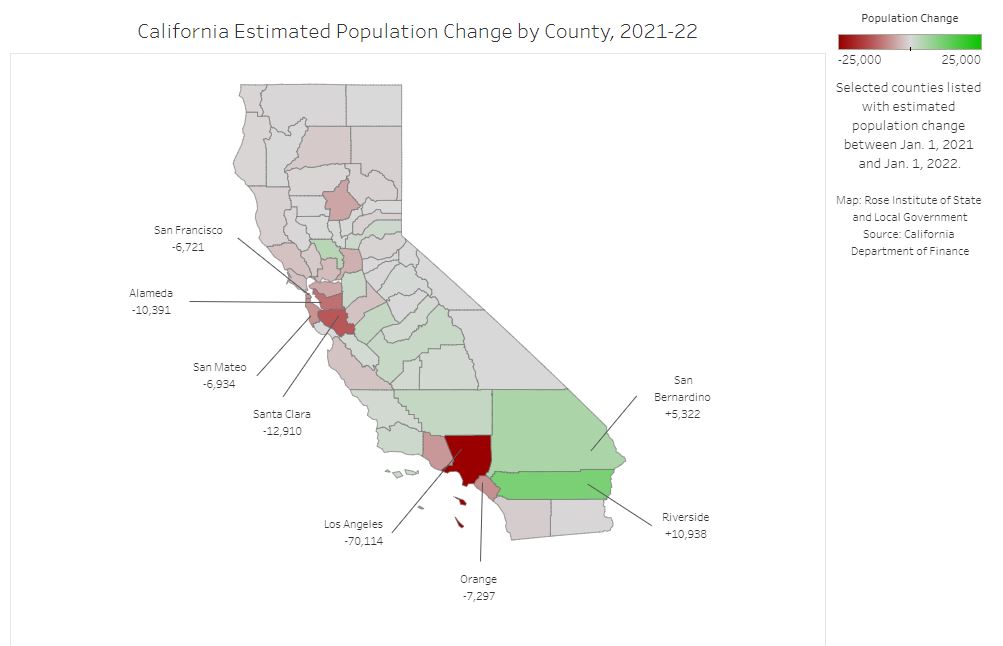California is the nation’s most populated state, but it might not keep its crown for long. Recent data from the United States Census Bureau reveals that California is one of the fastest shrinking states in the U.S. This trend, however, varies significantly across different regions within the state. While some areas experience growth, others face a dramatic decline in population.
In recent decades, U.S. population growth has experienced a steady decline, with New York state leading the way in losses. The Golden State is not far behind, as evidenced by data showing a decrease from 39.53 million residents in 2020 to 38.97 million in 2023. This gradual decline raises important questions about the future of California's demographic landscape.
Coastal counties like Los Angeles and San Francisco have lost millions of residents, while central regions of California are witnessing a different pattern. Understanding these shifts can provide insights into the socio-economic factors driving migration and population changes in the state.
Understanding Population Changes in California
California's population dynamics are complex, with various counties seeing different trends. For example, the following counties have experienced significant population increases over the last three years:
- San Benito County—6 percent increase in population
- Yuba County—5 percent increase
- Madera County—4 percent increase
- Merced County—4 percent increase
- Placer County—4 percent increase
Conversely, several counties have faced substantial declines, including:
- Lassen County—11 percent decrease in population
- San Francisco—7 percent decrease
- Alpine County—5 percent decrease
- San Mateo County—5 percent decrease
- Del Norte County—4 percent decrease
Alameda, Amador, Glenn, Los Angeles, Marin, Napa, Plumas, Santa Clara, Santa Cruz, and Trinity Counties also saw a 3 percent decrease in population. These trends indicate a migration towards the Central Valley, largely driven by high housing costs and living expenses along the coast.
Factors Driving California's Population Changes
Housing costs are a significant factor prompting many Californians to consider leaving the state. According to surveys by the Public Policy Institute of California (PPIC), about one-third of residents are contemplating relocation due to these financial pressures. This trend is evident across all income levels, with a notable decline in higher-income households since the COVID-19 pandemic.
Additionally, California's birth rates are at record lows. In 2008, fertility rates in the state were above the national average at 2.15 children per woman. By 2020, these rates had plummeted to 1.52, making California one of the states with the lowest fertility rates in the country.
As the population ages, with projections indicating that one in every four Californians will be over the age of 60 by 2031, the implications for public policy are profound. This demographic shift raises questions about healthcare, transportation, and various key services that will need to adapt to meet the needs of an increasingly older population.
Implications for California's Future
The ongoing population decline and demographic changes may impact California's position in various fields, including research and innovation. The state lost a congressional seat for the first time after the most recent census, and continued slow growth may lead to more losses in representation.
As California faces these challenges, it is crucial for policymakers to understand the underlying factors driving population changes and to consider strategies to address housing affordability, economic opportunities, and quality of life. The future of the Golden State depends on its ability to adapt and respond to these evolving demographic trends.
In conclusion, California's population dynamics present a complex picture of growth and decline. Understanding the factors behind these trends is essential for shaping the state's policies and future. What will California's next chapter look like as it navigates these challenges?
You Might Also Like
Voting Deadline Extended: Trump Secures Legal Win In PennsylvaniaInside The Quiet Neighborhood Of Rex Heuermann's Family
The Surprising Truth About Wordle's Starting Words
Kamala Harris Shares Spiritual Connection After Biden's Endorsement
Melania Trump's Hilarious Reaction To Kid Rock's Performance At The RNC
Article Recommendations
- New Jersey Map Population Shifting Crowded 1975080
- Little Rascals Netflix Where Are They Now 2021 1582862
- Joe Alwyn Posts Brooding Photo After Taylor Swift Cozies Travis Kelce 1950189
- Sweatpea Owner Speaks About Dog Honored During 2024 Puppy Bowl 1869279
- What Pamela Anderson Has Said About Sex Tape Tommy Lee Pamela Love Story Netflix 1776828
- Mel Gibson Anti Semitism Racism Accusations 1512808
- Rainbow Bridge Closure What We Know 1846195
- Tiffany Gomas Not Real Tiktok Video Ultra Right Beer Photo 1891657
- Jonah Hill Sarah Brady Text Messages Full Transcript 1812193
- Donald Trump Calls Jd Vance Town Hall Michigan 1974861


